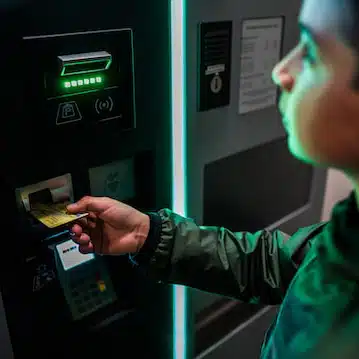ATM owners are charging consumers a record high $3.15 per transaction for making out-of-network withdrawals, up slightly from $3.14 a year ago, according to Bankrate.com. The new high is also the 22nd time in the last 25 years that out-of-network fees levied by ATM owners have hit a new high.
Out-of-network fees are charged by ATM owners each time a user makes an ATM withdrawal outside his or her bank’s ATM network.
In addition to out-of-network fees charged by ATM owners, a consumer’s bank may also levy a fee for making an out-of-network withdrawal. Consumers getting hit with both out-of-network fees pay an average surcharge of $4.73, up a penny from 2019. Some 62% of banks surveyed reported charging their own customers for using out-of-network ATMs, according to Bankrate.com. On average, banks charge customers $1.58 for using an out-of-network ATM, up from $1.52 in 2022, a 4% increase.

“Convenient access to your cash often comes at a price,” the report says. “You’ll generally be hit with one or two fees every time you use an out-of-network ATM. First, the bank that owns the ATM will impose a surcharge, and second, your own bank may charge a fee.”
At $5.33, consumers in Atlanta pay the highest average combined ATM surcharges, which are fees charged by the ATM owner and the consumer’s bank. That’s down from $5.38 in 2022, which was the highest combined out-of-network fee that year, according to bankrate.com. Other metro areas with high combined average fees, according to this year’s data, include Phoenix ($5.24) and Detroit ($5.21).
In contrast, Boston has the lowest out-of-network fee at $4.24, followed by Philadelphia at $4.31.
Consumers avoid out-of-network ATM fees by requesting cash back when making debit card purchases at a grocery or convenience store and by using a peer-to-peer payment service like Zelle or PayPal, Bankrate.com says.





